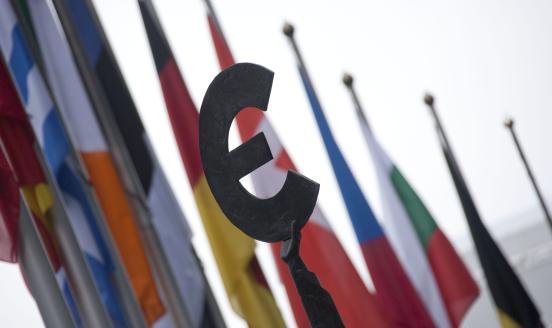Facts, not words: the EU role in the de-confinement phase
The EU should be modest, but not shy. As far as public health is concerned, it is not in the driving seat and there is no reason to pretend it should

Each year, 500 million passengers fly across the European Union. Each day, 1.3 million employees commute to work in another EU country. Ten million European citizens reside in an EU country other than that of their birth. International road haulage amounts to one-third of total EU traffic. Imports from within the EU amount to one-fourth of GDP. These numbers tell us how integrated the EU is – or rather was, before the coronavirus prompted a de-facto closure of national borders. And the numbers show how much is at stake in what amounts to a fragmentation of the EU along national borders.
Border closure was an inevitable side effect of the lockdown – and not just because public health is a national responsibility. All forms of mobility, be they across borders, between regions or even within cities, have entered a standstill. In early April, European air traffic was down by 90%, according to Eurocontrol. French high-speed train services had been scaled down by an even larger 93% and road traffic in major European cities was down by about 80%, according to TomTom.
The important issue is what will happen with the gradual lifting of the lockdown. Will exchanges resume across borders as well as within countries, or will a new, more fragmented EU emerge from the crisis? Will the fear of the virus and the fear of immigration (which existed before and had already led to restrictions at internal borders) amalgamate and result in an end to the free movement of people within the EU? This politically inflammable issue is a major question for citizens’ rights and the European economy. On 20 April, Donald Trump temporarily suspended immigration to the US to fight off “the attack from the invisible enemy” of COVID-19, but also “to protect the jobs of our GREAT American citizens”. This view is by no means peculiar to the US. According to a recent Le Monde/Ipsos poll 84% of French citizens are in favour of preventing foreigners from crossing the border.
On 8 April, Ursula von der Leyen and Charles Michel issued their Joint European Roadmap for the coordinated lifting of COVID-19 containment measures. It is a disappointing document. There is nothing in it member states will strongly disagree with, but nothing either that is likely to make a strong impact on their decisions. In fact, EU countries and even regions within them are devising their own partial exit strategies, with little regard to others.
But if the EU institutions do not offer a way forward, a combination of uncertainty, lack of mutual trust and fear could keep the Union in a state of semi-fragmentation. The EU can and should do more, and this does not require restricting member states’ ability to carry out their public health responsibilities.
The starting point of any assessment must be the observation that the incidence of the pandemic has been extraordinarily asymmetric. Recorded COVID-19-related death rates – the closest thing to a harmonized index of the acuteness of the situation at present – vary from 3 per million persons in Slovakia to 500 per million persons in Belgium (Figure 1). This is a huge difference, although smaller than among US states where it goes from 9 in South Dakota to 1000 in New York State.
Figure 1: COVID-19-related deaths per million inhabitants, EU and US states, 21 April
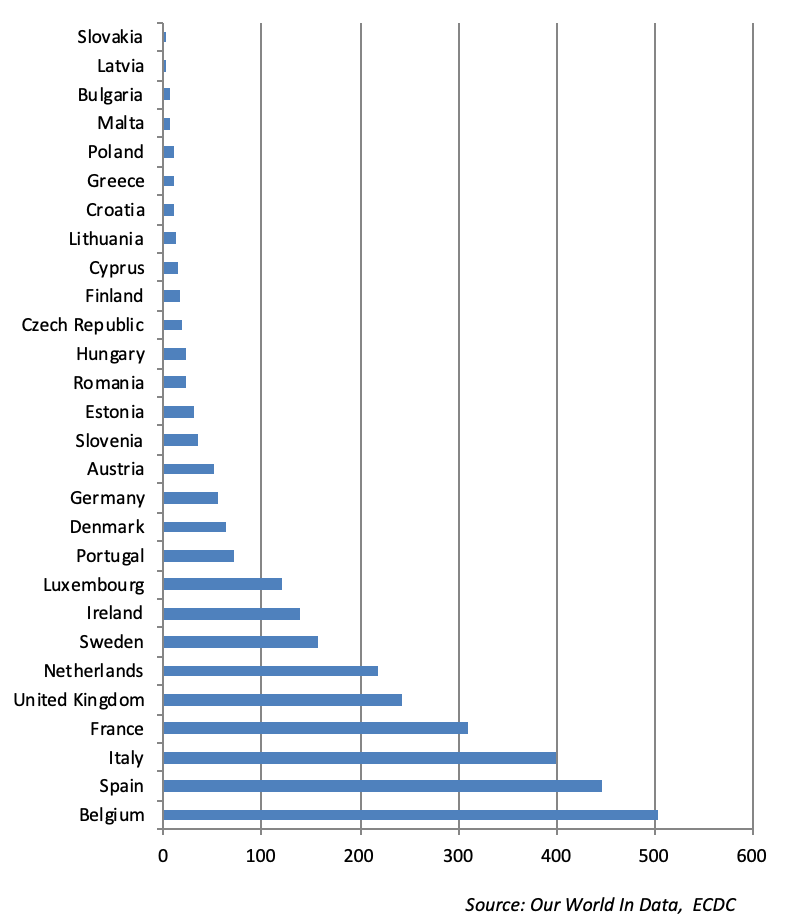
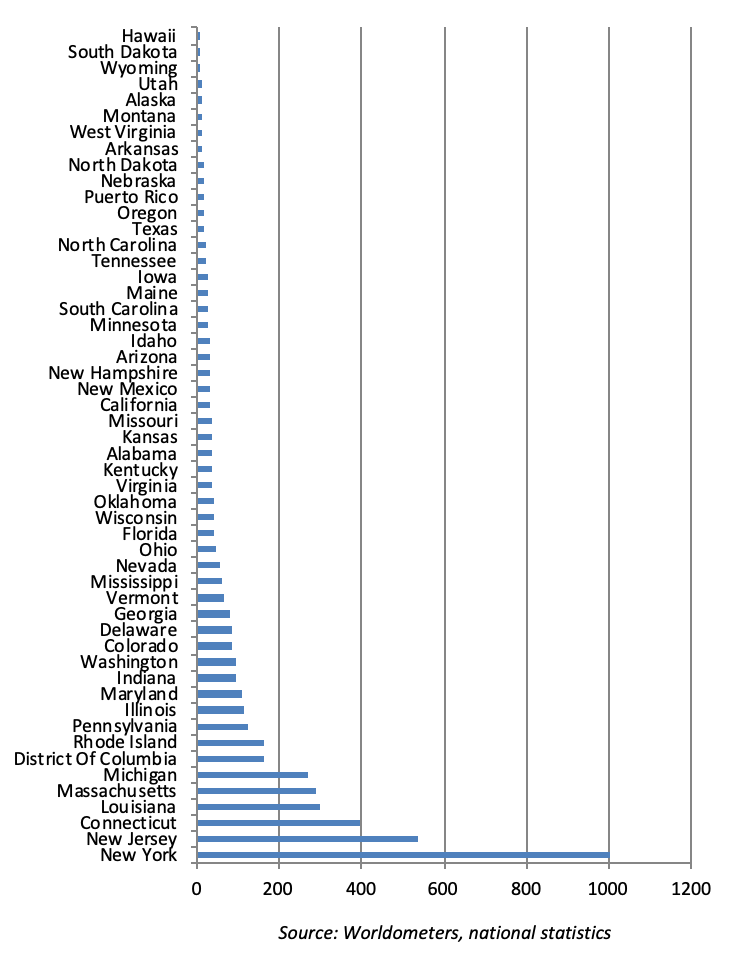
In the absence of precise, granular data on the evolution of the pandemic, there is no evidence-based explanation for these differences. The quality and capacity of hospital systems and retirement homes has certainly mattered, as has the extent of cuts in expenditure on them in recent years. But to a great extent, differences are probably random: some countries, including Spain and Italy, experienced the formation of unrecorded contagion clusters that gave rise to major outbreaks, while some had time to start implementing social distancing. The combination of pervasive uncertainty about the epidemiological parameters of the virus, the absence of comparable data on the evolution of the pandemic, and an uneven incidence of the virus across the EU, has become a major impediment to the reopening of borders. Under such circumstances, no responsible government will take the risk of an imported contagion. Exhortations won’t change this state of affairs.What should be done? In this field the EU’s role is not to tell the governments what to do, but to create the conditions for rational, coordinated decisions and joint action. This should start with the production and dissemination of reliable information. The Commission should:
- Collect and publish granular and reliable information on death rates. Recorded COVID-19-related deaths are only partially comparable, because while all member states count hospital deaths in the same way, this is not true of deaths in long-term dependency care centres or at home. The simplest and most reliable way to measure the impact of the pandemic is by comparing weekly death rates – whatever their cause – to their historical seasonal patterns. In Belgium, France, the Netherlands, Spain and Sweden, this data is now publicly available (Figure 2). Newspapers such as The Economist and The New York Times have started publishing them. Eurostat, which has been asleep at the wheel, should urgently organise the publication of comparable weekly data for all EU countries and regions. It can be done without delay.
Figure 2: Excess deaths in France, 1 March to 6 April 2020
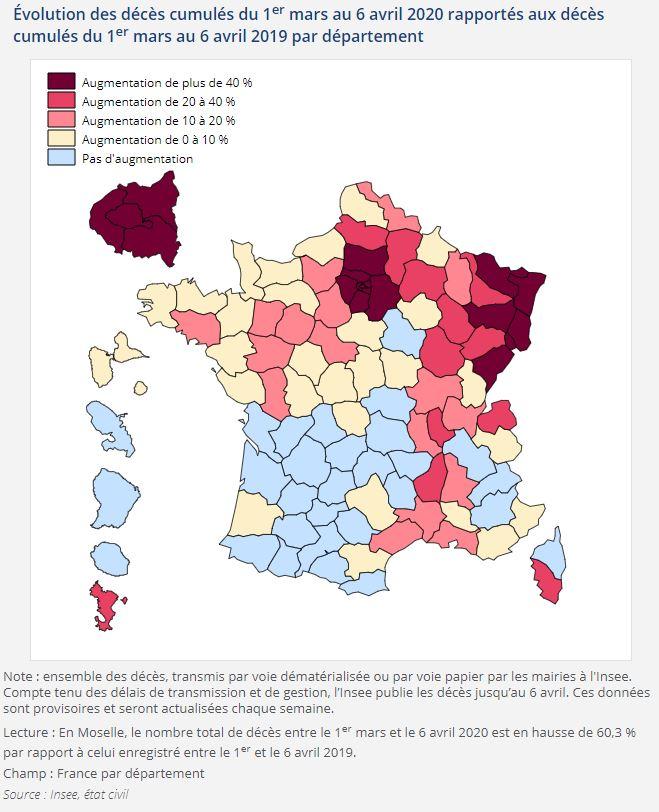
Source: Insee
- Conduct large-scale, frequent, regionalised, harmonised rolling surveys of the sanitary state of the member states. As the time lag between infection and eventual death generally exceeds a month, death rates are a lagging indicator that is insufficient to inform real-time decisions. Furthermore, death rates are affected by non-pandemic factors, such as the pre-COVID-19 sanitary situation and the availability of intensive care beds. Testing, however, is still far from widespread, and practices are different in different countries. As advocated by Abigail Wozniak, an economist with the Fed of Minneapolis, large-scale dedicated surveys can provide a good enough means to monitor the evolution of the pandemic and compare situations across regions or countries. Some member states have started launching such surveys, but on a non-harmonised basis. Again, the EU should play a major role in the design, organisation, monitoring, financing and publication of such surveys. Results would be of scientific value, as they would help improve knowledge about contagion processes. They would also provide a basis for deciding when to lift obstacles to the mobility of persons between two countries where the sanitary situations are comparable. Their dissemination would help inform citizens and reduce mutual distrust.
- Collect comparable evidence on compliance with social-distancing requirements. To assess how the situation is likely to evolve, it is important to monitor risk-mitigation behaviour. The relative stringency of government measures is being monitored, for example by the Oxford Blavatnik School’s Government Response Tracker. Enforcement however can vary, and citizens can decide by themselves to take precautions, even if not required by the government. Again, lack of trust in the behaviour of a partner country’s citizens can be a good reason to keep borders closed. Fortunately however, technology provides ways to measure actual behaviour: Google mobility reports or Unacast’s Social Distancing Scoreboard provide detailed, real-time data on actual behaviour. They show that social distancing varies markedly within countries or even within US states (Figure 3). Again, the European Commission should assess available observation tools and help make sure that reliable results are available for all EU members.
Figure 3: Social Distancing Scoreboard, Michigan vs. South Carolina
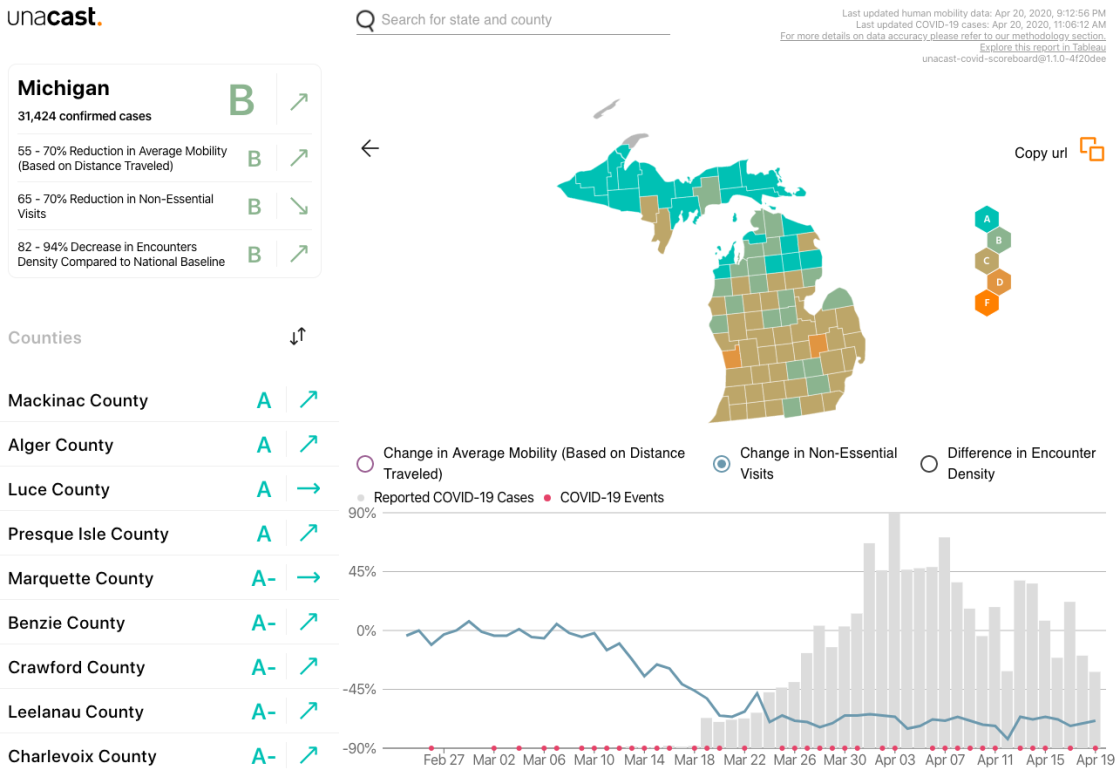
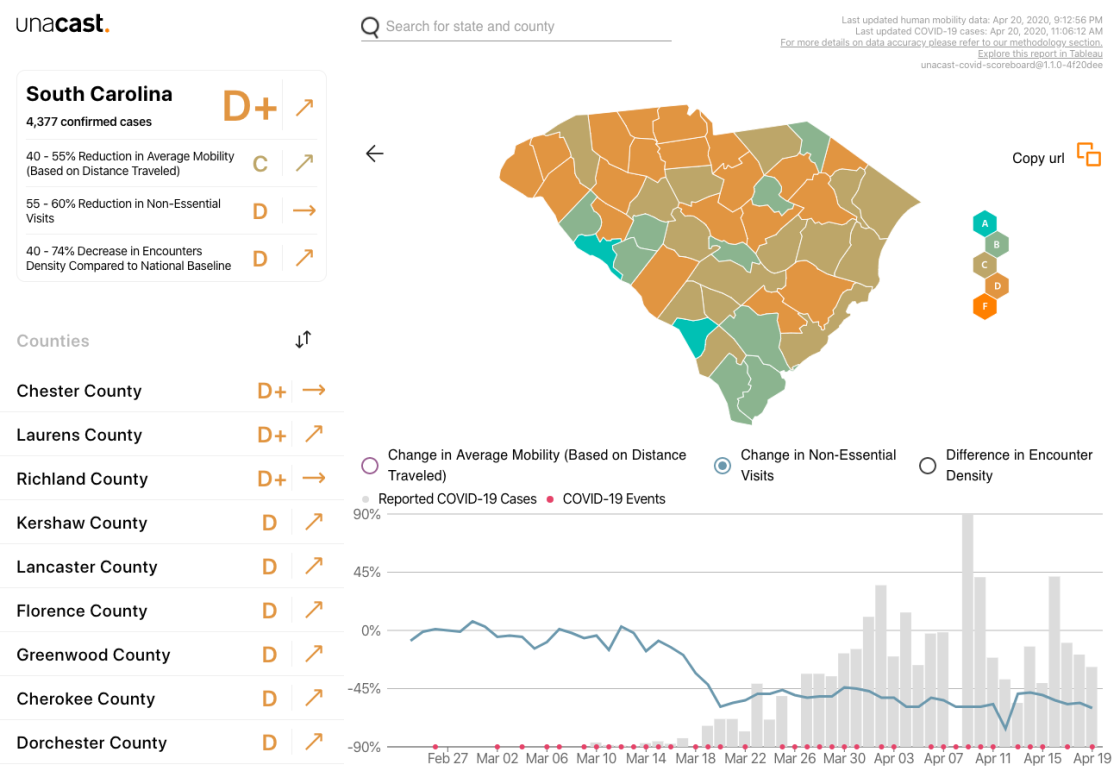
Source: Unacast
These are simple but essential things to do. They do not require significant additional resources or provision of a formal mandate to the Commission (though political endorsement would obviously be welcome). Existing agencies, such as Eurostat, should be mobilised to this end. They would lay the groundwork for the next step that will involve the organisation of EU-wide comparable testing, coordinated health checks at departure airports and the joint definition of common benchmarks, based on which decisions can be taken on the lifting of bilateral travel restrictions. Because national capabilities differ widely, testing policy is clearly not something that can be harmonised at present. Nor can the same tests be deployed at all airports and checkpoints. But it is important to prepare and define the basis for a common approach, both for RT-PCR and serological tests. The EU should start already and prepare a harmonised approach.
The EU should be modest, but not shy. As far as public health is concerned, it is not in the driving seat and there is no reason to pretend it should be. But in connection to research on treatments and vaccines, it has a vital role to play in the collection and dissemination of accurate information on the development of the pandemic. In a situation dominated by fear and uncertainty, information is an essential ingredient for rebuilding trust, for creating the conditions for the gradual reopening of borders and for paving the way for common initiatives and policies. This is not something that member states will do by themselves. They need the EU to step in quickly.


